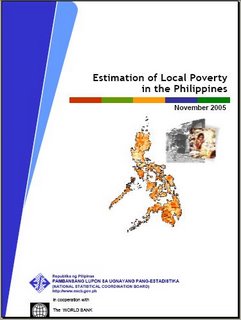Next steps: Bicol poverty series (6)
 THIS NSCB study represents a watershed in the continuing effort to improve governance in the public sphere. As noted in its Introduction, there has been “an increasing demand from policymakers and planners for a more disaggregated set of poverty statistics so that aid programs could be more effectively targeted to the areas most in need.”
THIS NSCB study represents a watershed in the continuing effort to improve governance in the public sphere. As noted in its Introduction, there has been “an increasing demand from policymakers and planners for a more disaggregated set of poverty statistics so that aid programs could be more effectively targeted to the areas most in need.”
In addition to more effective targeting, there is the equally important and logical consequence of precisely designing and implementing these aid programs: the need for accountability over outcomes. As economist Solita C. Monsod wrote in his column entitled “The poorest of the poor” which appeared the June 22, 2006 issue of Business World:
The city/municipal level poverty estimates can be used as benchmark figures for the monitoring of income poverty at the local level. And while the data may be considered outdated, it must be remembered that many of these small areas are under the sway of families who have monopolized political power for decades and even generations – the hard information provided even at 10-year intervals will certainly help the people in deciding the ultimate fate of these political leaders. (Italics supplied)In this regard, there is a need for the following:
1. Generation of a local human development index among Bicol LGUs. The current literature on development, influenced by Amartya Sen’s seminal work, shows that poverty is multidimensional. The HDI and its variants very much address this need for multidimensionality as it factors in three basic dimensions of development: (a) a long and healthy life, (b) knowledge, and (c) a decent standard of living.
But while the NSCB study only measures income poverty, it already addresses the third dimension, for quite some time a major gap in the effort to generate a localized HDI.
2. A Bicol region human development report should be produced complementing the regular Philippine Human Development Report (PHDR). It must be presented in one meeting of the Regional Development Council called specifically for the purpose. And printed and digital copies should be made widely accessible, particularly in the media and in the internet, to generate and sustain interest, in the process reinforcing its usefulness as a mechanism for exacting public accountability.
3. HDI and other human development indicators should be promoted as an outcome-oriented public accountability measure. It should motivate local stakeholders, particularly civil society organizations (CSOs) in Bicol, to take a closer look at how our local governments are spending their resources, and link them to clear and specific outcomes (which HDI and its variants capture). As it stands, the income per capita is performance-neutral; while it tells us how much on the average an LGU can spend for every citizen, it does not tell us how the money was spent, and more importantly the results of its spending. As shown above, the annual audit reports of the COA will be a good place to start.
4. Finally, these outcome indicators should be elevated as a primary issue, both in political discourse and the electoral process itself. This way, the whole development process in our democratic system can be joined as ordinary citizens will already have a solid basis for measuring the performance of their elected leaders.



0 comments:
Post a Comment